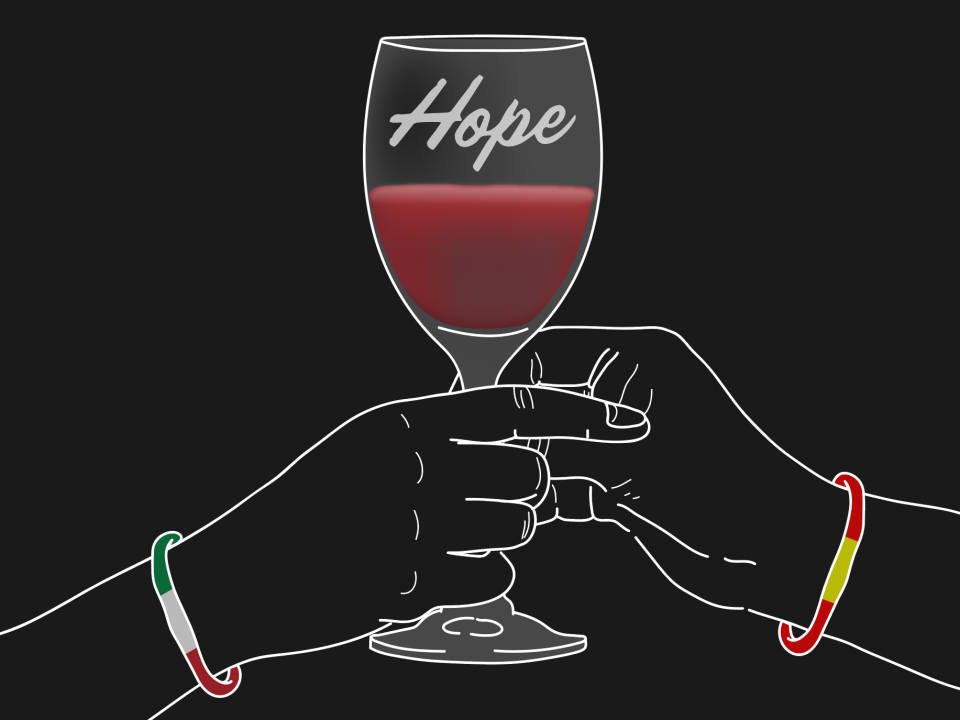
High quality and beyond: the Native Grape Odyssey Maestro Course endorses the promotion of geographical indications in Russia
October 21, 2019
Protected Designation of Origin (PDO), for a more protected Europe
October 30, 2019What is the difference between PGI, VdT and IGT, the three European designations of origin? Let’s try to explain it in this scenario: your name is Michael, you are a Canadian Sommelier who has just arrived in Europe.
You have a backpack on your shoulders as big as a Magnum wine bottle (or maybe bigger), you have your most comfortable sneakers on your feet and your food and wine guide in your hand. You’ve only been here a week, but you already feel at home in the arms of this old continent. There’s only one thing that confuses you: on Monday, in Paris, a taxi driver said goodbye to you with a sober “Au – revoir Michel”, on Wednesday, in Madrid, the new friend you met at the tapas bar in Plaza Mayor, greeted you with a warm “Gracias y hasta pronto, Miguel”, and finally, on Saturday evening, the receptionist of the Hotel Brunelleschi in Florence welcomed you with a friendly “Ciao Michele, benvenuto!” (Hello Michael, welcome!). Within a week you were addressed using three different names, but all three were all using exactly the same name. Your name is Michael, but also Michel, Miguel and Michele..
Just like with your name, the abbreviations for certain designations of origin also vary, depending on where the trademark product is registered.
But let’s take a step back: what exactly is a denomination of origin? The European Union system of denominations of origin was created in 1992 through a proposal by the Ministry of Agriculture. Since then, it has been a quality index that serves to define the peculiarities of agri-food products expressed by its specific origin.
As a sommelier Michael, what interests you, are the wines that are deserving of these special labels of origin, “the excellence of European agri-food production”, as well as “the results of unique combinations of human and environmental factors”, typical to a given territory. (www.dop-igp.eu). To guarantee this quality, and to protect future goods from unfair practices, the European Union has established specific regulatory regimes that each producer must comply with, better known as production regulations.

As with the food sector in Europe, the wine sector also has several brands that carry this quality mark. Of these designations, the most common include PGI and PDO. The substantial difference between a PDO and a PGI is that, in order to obtain a PDO, it is necessary to complete all the production phases within the same territory, for a PGI this is not a mandatory requirement. Instead, with PGI, at least one of the production phases must have been completed within the region.
Today we will focus on PGI, an acronym that stands for “Protected Geographical Indication“: this name indicates foods and wines typical of a specific geographical area, which are then produced and / or processed and / or processed exclusively in that area. In Italy, PGI (“Indicazione Geografica Protetta“) can alternatively be indicated as IGT on the label, “Indicazione Geografica Tipica“. To give an example, the name “Vigneti delle Dolomiti IGT”, is applied to products within the specific “novello” type, and can only be obtained from wines composed mainly of red grapes such as Lagrein (for the province of Bolzano) and Lagrein and Teroldego (separate or combined) for the province of Trento. The production area includes the entire territory under the provinces of Bolzano, Trento and Belluno.
Why is that? Because it says so in its production rules, along with many other specifications regarding the method of processing and vinification; the peculiarities of the wines themselves once ready for consumption and their link with the geographical environment.

The Italian PGI acronym and phrase “Indicazione Geografica Protetta” changes depending on the EU language. So, for Spanish, the phrase and acronym would be VdT “Vin de la Tierra” (this corresponds to”Vin de Pays”in French). According to the current European regulation, they all mean the same thing.
Among the European countries, Italy currently boasts the highest number of designations of origin in the wine sector, we are talking about 118 PGI.
Names such as Vigneti delle Dolomiti IGT, Lazio IGT or Sicilia IGT are now recognizable by wine lovers all over the world.
Spain is no less fortunate in that it holds 36, a lesser number, but equally enviable. You have probably already heard of (or perhaps even tasted) Castilla y Leon VdT, which is produced in the region of the river Duero.
You have likely noticed that the acronym PGI is always combined with the name of a region, or in exceptional cases, the country or territory, making it easily recognizable (the Dolomites, for example); this is done to indicate the origin in the most intuitive way possible. This method certifies that the quality of the product in question can only derive from a limited geographical area that contains certain typical characteristics.
So, Michael, or Miguel or Michele: in addition to your food and wine guide, now you have also experienced a taste of a topic that is always considered a bit difficult, that of denominations of origin, the PGI, or IGT or VdT.


